Soldier Story: Kozo Yamane
Soldier Story
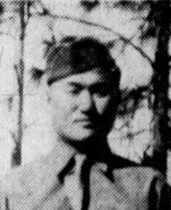
Kozo Yamane
Private First Class
442nd Regimental Combat Team
2nd Battalion, H Company
Kozo Yamane was born on October 8, 1924, in Kaysville, Utah. He was the son of Yasaburo and Tsuruyo (Kawamoto) Yamane, and the fourth child of eleven children. His siblings were: brothers William, James (known as Jimmy), Isamu (known as Samuel or Sammy), and Jun; and younger sisters Tsuneko, Helen Michiko, Netsuko, Yayoi (known as Yai), Tamiko (known as Tammie), and Pamela.
Father Yasaburo, known as Joe, emigrated from Iwakunishi, Yamaguchi Prefecture, Japan, arriving in Hawaii on the S.S. Korea on October 27, 1914. He was born on August 7, 1895. During World War I, Joe served in the U.S. Army. Prior to that, he worked as a waiter in Honolulu. On October 7, 1919, he was married at Makiki Church to Tsuruyo Kawamoto (born in Kailua-Kona on Hawaii island on December 24, 1901). Her parents, Sotaro and Kuma Kawamoto, had emigrated from Hiroshima Prefecture in 1897. Sotaro was a blacksmith and the family later moved to Honolulu.
By 1930, Joe and Tsuruyo had moved to the mainland US and settled in Kaysville, where father Joe was a farmer. Kozo and his brothers helped on the family farm. They were still there in 1940. In 1942, he graduated from Davis High School, in Kaysville, which is about 30 miles north of Salt Lake City.
Ko, as Kozo was known, signed his draft registration card on December 21, 1942, Local Board No. 7 in Davis County, Utah. At the time he was living with his family on RFD #1 in Layton (two miles north of Kaysville). His father was his point of contact and he was employed by Utah Cannery in Ogden. He was 5’6” tall and weighed 140 pounds.
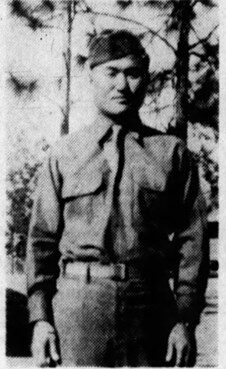
On May 3, 1943, Ko Yamane enlisted in the U.S. Army at Camp Douglas, Utah. He was sent to Camp Shelby, Mississippi, for training. Once there, he was assigned to H Company, which was the heavy weapons company of 2nd Battalion.
Ko at Camp Shelby in 1943/44
After a year of basic, combat, unit, and specialized training and field maneuvers, the Combat Team left Camp Shelby by train on April 22, 1944, and arrived at Camp Patrick Henry, Virginia. They sailed on May 2 from nearby Hampton Roads in a convoy of about 100 ships.
Once they arrived in the Mediterranean, the ship that carried most of 2nd Battalion left the convoy and headed for port in Oran, Algeria. After offloading cargo, they rejoined the regiment at Naples, Italy, on June 17. The rest of the 442nd had arrived on May 28 and was by then in bivouac at nearby Bagnoli. Second Battalion followed the same route. They then went by LSTs to Anzio and were trucked around Rome to a larger bivouac near Civitavecchia, about 50 miles north.
The 442nd entered combat on June 26, 1944, near Suvereto in the Rome-Arno Campaign. For the next few months they pushed the Germans north along the Italian peninsula. During this time, Yamane was wounded on July 4/5 just north of the Cecina River in the battle at Hill 140, also referred to as “Little Cassino” due to the fierce resistance from the Germans. Yamane was a first gunner in the machine gun squad of H Company. During the battle, Yamane insisted on leaving his protected emplacement to rescue a comrade who had been wounded. Despite being wounded himself during the rescue, he pulled his friend out of the line of fire before permitting himself to be evacuated to a field hospital in the rear. At some point, he recovered and was able to return to his company.
After driving the enemy north to the Arno River, the 442nd was pulled from the lines and sent to Naples for shipment to France, where they joined in the Rhineland-Vosges Campaign. They arrived at Marseille on September 29 after a 2-day voyage, and bivouacked at nearby Septèmes prior to traveling over 500 miles north by truck or rail boxcars to the Vosges.
Yamane’s 2nd Battalion was transported by truck. After three days of traveling in the rain and bivouacking in pastures, all elements of the 442nd, except 3rd Battalion, arrived at an assembly area at Charmois-devant-Bruyères on 12:30 p.m. on October 11. Beginning at 2:00 p.m. the following day, the Combat Team began moving into position for an attack the next morning.
The weather was cold, wet, snowy, and miserable, as the men fought in the heavily wooded forests still in their summer uniforms. They were subjected to living in foxholes, and incoming artillery raining down on them in “tree bursts.”
The objective was the important road and rail center of Bruyères, located in a small valley surrounded on three sides by hills, designated A, B, C, and D. For the next few days the fighting was fierce and bitter. The Germans had been ordered to defend Bruyères at all costs as it was so close to the border with their homeland.
Yamane was wounded in combat on October 20, the sixth day of fighting to push the enemy from Bruyères and its surrounding area. As written in the March 29, 1945, edition of the Davis Reflex-Journal newspaper of Bountiful, Utah:
Hero of 442nd Combat Team gains furlough on battle record. Layton, March 12, 1945. …..One day, while his heavy weapons company was attached to a rifle company that was attacking across some railroad tracks, Pfc. Yamane found himself ahead of his mates. He saw that the superior-in-number Germans were going to launch a counterattack against the American assault company. From his vantage point, he started to fire away, trying to discourage the enemy before they fully exploited their greater numbers in the counterattack.
In spite of Pfc. Yamane’s one-man efforts, the Germans attacked in force. Yamane remained at his threatened post firing his machine gun with his left hand and his pistol with his right hand. At one time, the Nazis were so close to his position that he could hear commands given by the German non-commissioned officers [NCOs] to their men. Though subjected to machine, pistol, automatic rifles, and a bazooka fire, he remained at his post, firing away so that his comrades could organize to repulse the attack. Though injured by shrapnel, he fought on until the enemy was driven back.
His platoon leader, Sec. Lieutenant Willie Kiyota of Fort Lupton, Colorado, declared that it was largely because of Pfc. Yamane’s stand that the Germans were held off and their counterattack failed to materialize. His First Sergeant, Hatsuo Saraye formerly of Los Angeles, California, describes Pfc. Yamane as one of the best men in the regiment – quiet, unassuming, but a deadly soldier in battle.
Upon recovering from his shrapnel wound, Yamane returned to his unit. After the fierce fighting in the Vosges resulted in heavy casualties, the depleted ranks of the 442nd were sent to the south of France. There, they could rebuild to full combat strength while fighting in the Rhineland-Maritime Alps Campaign, which was mostly a defensive position guarding the French-Italian border from attack by the German Army in Italy. The 442nd arrived there on November 23, 1944.
In March 1945, Yamane was given a furlough and sent back home to Utah. As written in the March 29, 1945, edition of the Davis Reflex-Journal newspaper:
Capt. Christopher Keegan, commanding the heavy weapons company, selected him [Yamane] for this 30-day, plus traveling time, furlough back to the United States and his home, stated that he did so because he deserved the trip [based] on his battle record.
While Yamane was on his furlough, the 442nd was sent back to Italy to join in the Po Valley Campaign, arriving on . The German forces in Italy surrendered on May 2, 1945, and, as a result, Yamane did not return to the Combat Team.
Yamane was discharged on October 29, 1945, at the Army Separation Center in Camp Gordon, Georgia. Research did not reveal where he spent the months between the end of his furlough in late March and his discharge seven months later.
For his military service, Private First Class Kozo Yamane was awarded the Bronze Star Medal with one oak leaf cluster, Purple Heart Medal with one oak leaf cluster, Good Conduct Medal, European-African-Middle Eastern Campaign Medal with three bronze stars, World War II Victory Medal, and Combat Infantryman Badge. He was awarded the Congressional Gold Medal on October 5, 2010, along with the other veterans of the 100th/442nd Regimental Combat Team. This is the highest Congressional Civilian Medal.
Kozo Yamane married Emily Ami Okuda, known as Amy, on July 29, 1948, in Salt Lake City, Utah. She was the daughter of Harugo and Kumaye (Tokuhira) Okuda of Clearfield, Utah. On August 6, their wedding reception was held at Ma’s and Pa’s Café in Clearfield.
They returned to Layton, where Ko was a farmer. In 1958, they moved to Warden, a small town in central Washington, where he farmed. His interests included farming, bowling, baseball, skiing, golf, and tending to his vegetable garden and fruit orchard. In 1967 he was one of three finalists for the title of “Conservation Farmer of the Year” in Warden. He was a charter member of the Warden Lions Club in 1968. Over the years he and Amy raised two daughters and one son.
Below: Kozo’s parents, Joe and Tsuruyo Yamane
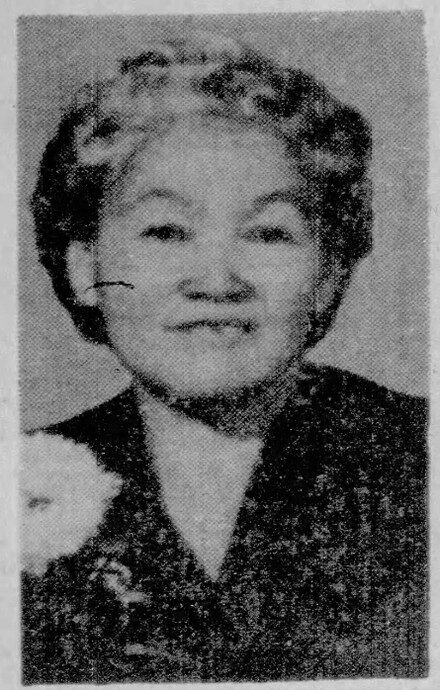
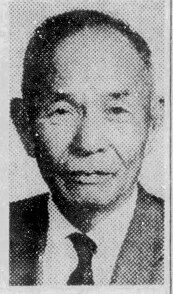
Amy Yamane died on December 25, 2002, and was buried at Sunset Memorial Gardens in Warden, Section B17, Space 36. Kozo Yamane died on December 6, 2010, at Providence Sacred Heart Medical Center in Spokane, Washington. He was buried next to his wife. Survivors included his three children, six grandchildren, brother James, and sisters Helen Higashida, Michi Kawauchi, Netsuko Gerberding, Yai Yamashita, Tammie Sato, and Pamela Sato.
Below: Ko Yamane in later years, about the 1980s
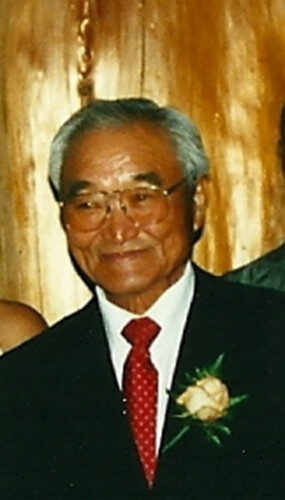
His brother Private Jimmy Yamane also served in the 442nd RCT.
Researched and written by the Sons & Daughters of the 442nd Regimental Combat Team with assistance from the Yamane family in 2025. His daughter is a member.